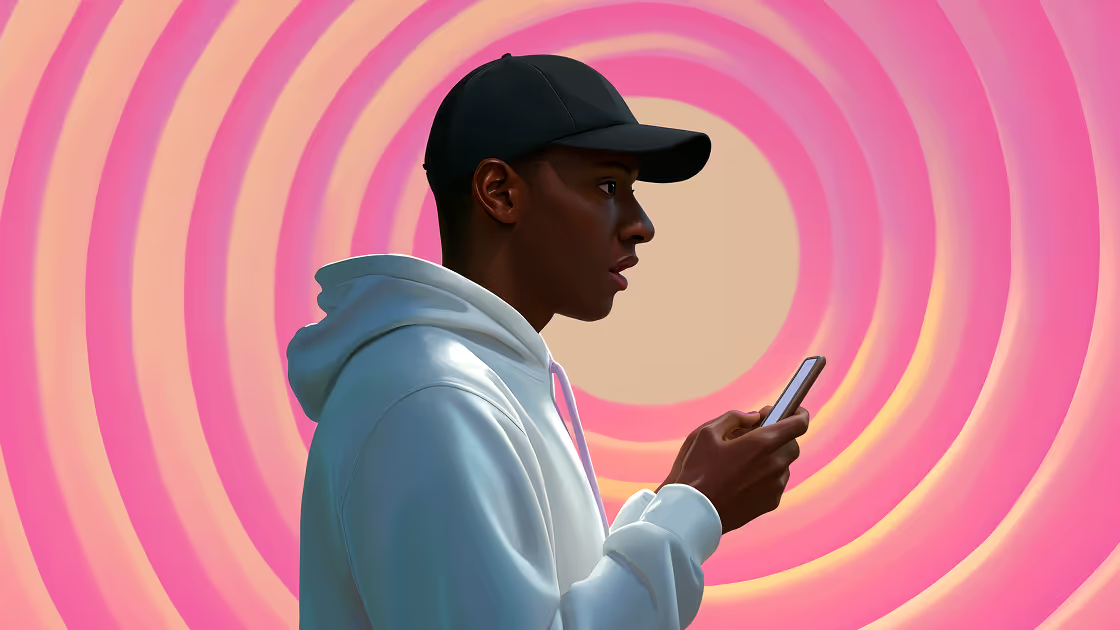
THE DEATH MARCH OF HYPERCOLOR BALLOON SWORDS

C-suite suits in snake-skin boots, sitting in expensive leather desk chairs, puffing on skinny cigarettes, have prostituted out our quirks for profit — and by Godzilla, we want them back!
🦖 Rawr!
Phew.
Had to get that out of my system. I feel better. Do you feel better? Good. Let's put some lipstick on this pig and proceed a little more professionally. But not too professionally.
Picture this: You're scrolling through your feed when you encounter Google's recent AI ad featuring a father and daughter using artificial intelligence to write a heartfelt fan letter to an Olympic athlete. Something feels...off. Not quirky-off. Not delightfully strange off. More like watching-a-robot-pretend-to-have-feelings off.
Google pulled the ad faster than you can say "Dear Sydney," but the damage was done — and the internet NEVER FORGETS.
Just give the kid some crayons, Dad!
Welcome to the uncanny valley of modern marketing, where brands have become so obsessed with manufacturing oddity that they've forgotten what made it work in the first place: actually being f*cking weird!
We're living through the death throes of authentic brand strangeness, and honestly? It's getting ugly out there — and not in a fun way.
But there is real data behind the backlash, and smart money is on the line for brands that can crack the code.
The Golden Age of Beautiful Freaks
Let's pour one out for the glory days when odd marketing slapped. Remember when Squatty Potty dropped a unicorn dumping out rainbow ice cream to sell toilet stools? That ad racked up 42 million YouTube views because it was gloriously, unapologetically unhinged.
Or when Skittles said "screw the Super Bowl" and created an entire Broadway musical that cost $200 per ticket and sold out immediately? Deliciously original.
These campaigns worked because they had something most modern "quirky" ads lack: genuine creative courage like pasting a mouth on some taxidermied abomination. Thanks for that, Quiznos.
They weren't strange because a focus group suggested it or because an algorithm demanded engagement. They were bizarre because someone had a genuinely outlandish idea and the bravery to execute it.
The numbers back this up. Research shows that 88% of consumers resonate with brands that aren't afraid to get a little weird, mainly because these moments feel more authentic in a landscape saturated with polished corporate messaging. But here's the kicker: while 91% of consumers prefer brands to be funny, only 5% of businesses are willing to take the risk.
The science behind this is pretty straightforward. Studies from Tilburg University show that surprising consumers is one of the most powerful ways to capture and keep attention. When done right, absurdist marketing creates what researchers call "positive incongruence" — your brain does a double-take, but in a delighted way rather than a disturbed one.
GIVE ME ALL THE ENDORPHINES!!!! (sorry)
But here's where things went belly-up: Corporate America saw these successes and thought, "We need to get strange too." Cue the sound of creativity dying a slow death at the end of an algorithmic rope. I'm looking at you, Zuckerbot.
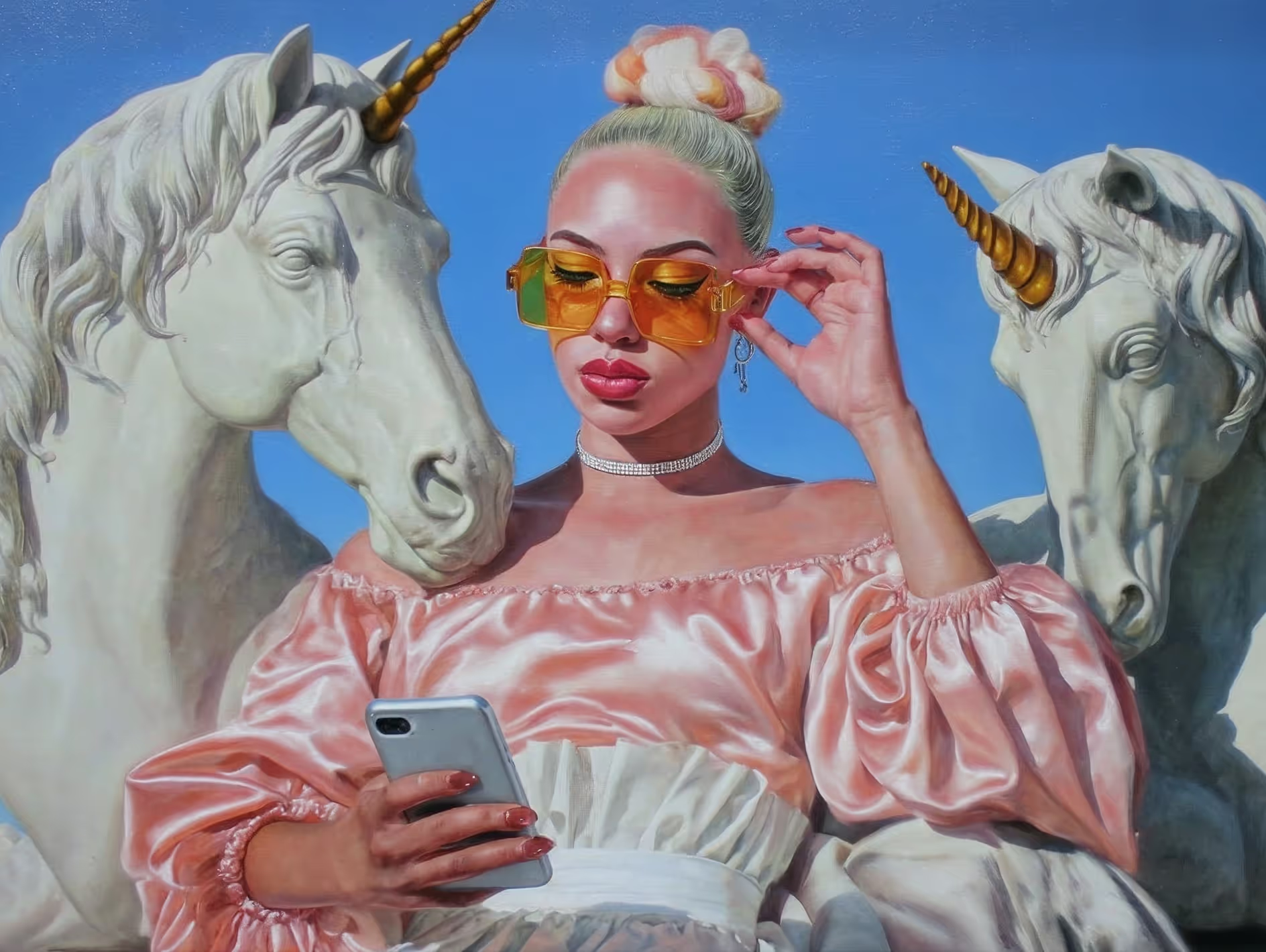
The Boardroom Bullshitification Process
In ornate gilded conference rooms across America, conversations like this started happening:
CMO: "Our engagement is down 12%. I heard odd content performs better."
Creative Director: "Define odd."
CMO: "You know, like that unicorn poop thing. But make it brand-safe."
Creative Director: "So... not weird?"
CMO: "Exactly! Bizarre, but not too bizarre."
This dialogue represents something bigger than bad marketing; it's the commodification of counterculture in microcosm. We've reached peak irony death, where the very concept of being "different" has been focus-grouped into submission.
The same algorithms that have turned authenticity into a content category on social media have infiltrated corporate boardrooms, creating a feedback loop where genuine strangeness is processed through engagement optimization until it emerges as sanitized "quirkiness."
And thus, focus-grouped weirdness was born — the marketing equivalent of a lab-grown hamburger that technically contains all the right ingredients but somehow tastes like sadness.
Pour one out for Carl's Junior. I know, they're still around, but their marketing is more tasteful than their burgers now.
The result? A tsunami of manufactured strangeness that feels about as authentic as a politician's Twitter account. Covfefe anyone?
Six major campaigns in 2024 alone faced significant backlash for their forced quirkiness, from tech companies to dating apps to consumer goods brands. Take Apple's recent "Crush" campaign, which showed beloved creative tools literally crushed into an iPad. The backlash was swift and brutal. Critics didn't see innovation; they saw a tone-deaf metaphor for Silicon Valley steamrolling human creativity.
Leave it to an actual creator to make that Apple Commercial better by simply flipping it on its head, smacking its ass, and telling it to walk backward.
Or consider Bumble's spectacularly disastrous billboard campaign featuring messages like "A vow of celibacy is not the answer." The internet collectively cringed so hard that Bumble pulled the ads faster than you can delete their app. Go ahead, delete it. Time yourself. But, again, the internet remembers Bumble's fumbles.
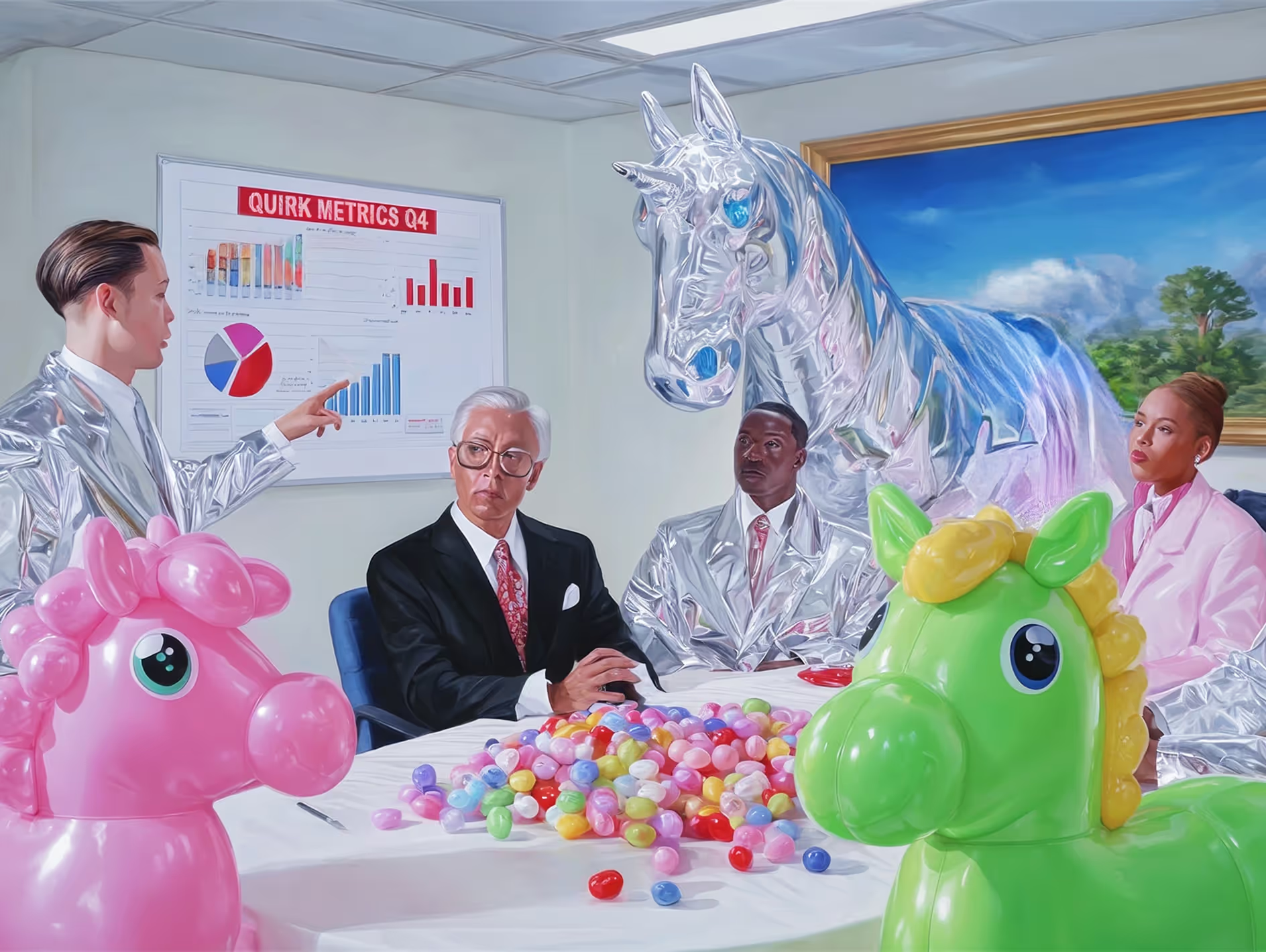
AI: The Weirdness Amplifier Nobody Asked For
Enter artificial intelligence, stage left, wielding the creative sensibilities of a particularly unimaginative toaster better dropped in an ad exec's bathtub. AI has become the ultimate enabler of manufactured strangeness, capable of generating infinite variations of content that technically qualify as "different" while being fundamentally soulless.
The numbers are staggering: 64% of marketers already use AI and automation, with consulting firm Gartner predicting that 80% of advanced creative roles will be using GenAI by 2026. But speed and scale don't automatically equal authentic weirdness.
The AI advertising landscape of 2024 reads like a fever dream. As one tech journalist noted, most AI ads feel "completely divorced" from the companies creating them, featuring vague promises like "Intelligence so big, you'd swear it was from Texas" and "AI that talks to cars and talks to wildlife." It's quirkiness for quirkiness's sake, generated by machines that understand pattern matching but not human absurdity.
Coca-Cola's AI-generated holiday ad perfectly encapsulates this trend. While technically impressive, the campaign felt cold and impersonal compared to the brand's traditionally heartwarming Christmas content. It had all the visual elements of a Coke ad but none of the soul — like a deepfake of your favorite childhood memory.
But here's the plot twist: AI isn't inherently the villain. When used as a tool to augment human creativity rather than replace it, AI can enable genuinely innovative, strange marketing. The problem is that most brands are using it as a shortcut to odd rather than a pathway to authentic strangeness.
Then you have Meta, whose new dark mission is to automate ad campaigns fully. Not in the next ten years. Or even two. By the end of 2026.
And this trend shows no signs of slowing. As we move deeper into 2025, the pipeline of AI-generated marketing content promises even more uncanny valley moments (I.e., unfunny, impersonal, bullshittery), with brands racing to automate creativity faster than they can understand what made it human in the first place.
FML.
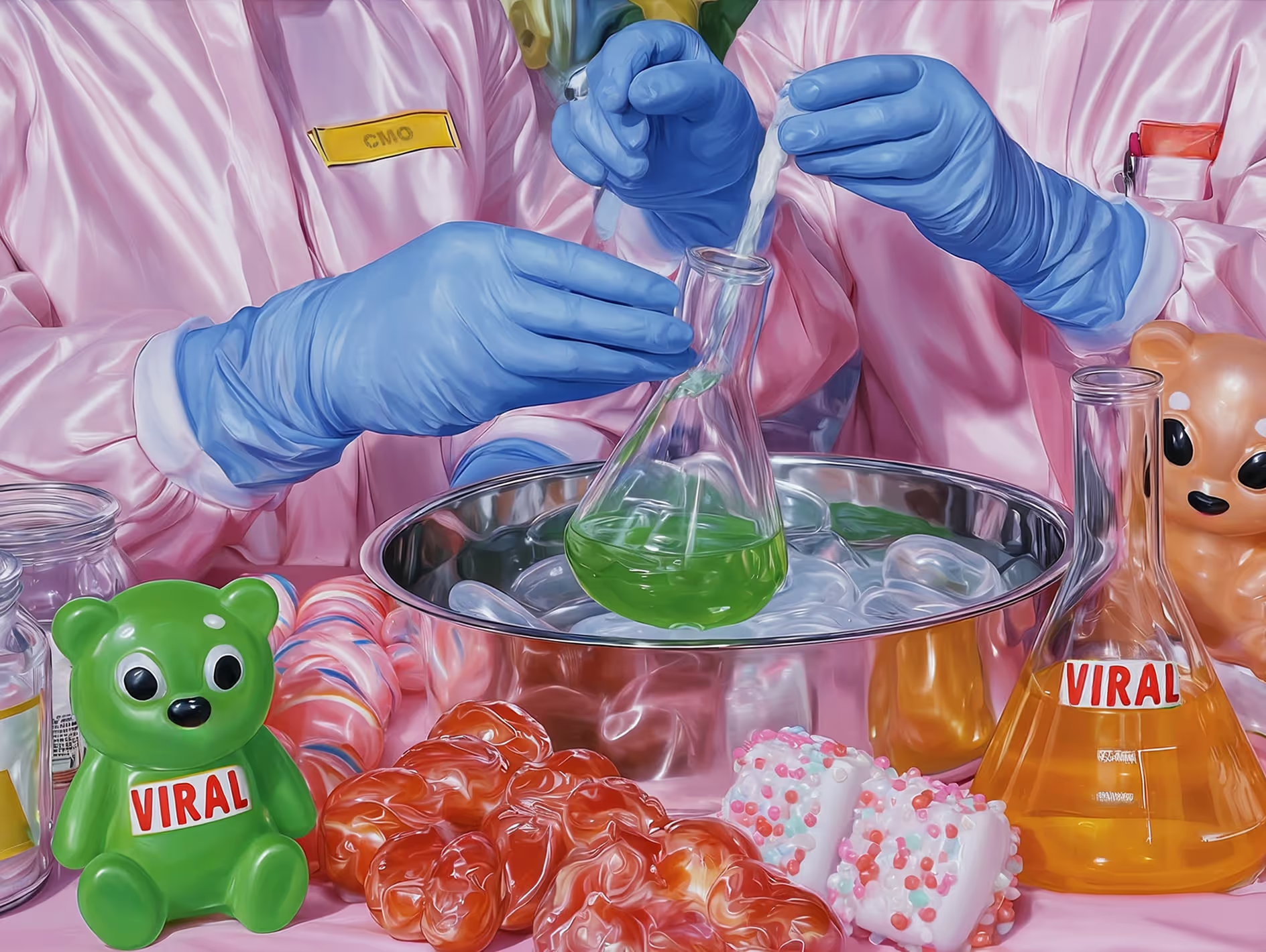
The Consumer Rebellion Against “Weird”
Here's the thing: audiences aren't stupid. They can smell manufactured quirkiness from a mile away — like grandma’s perfume or a teen boy’s body spray — and they're getting increasingly vocal about it.
The data is brutal: while 92% of marketers think their content is authentic, only 51% of consumers agree. That’s what you might call a chasm of mutual misunderstanding.
Meanwhile, 68% of consumers now prioritize authentic and relatable social media content over polished, high-quality content. The message is clear: audiences would rather see genuine personality than expensive production values.
Social media has become a brutal feedback mechanism for bad, strange marketing. When brands miss the mark, the internet responds with the kind of swift, merciless justice that would make French revolutionaries proud. Memes, mockery, and viral takedowns now follow failed odd campaigns like vultures circling roadkill.
The authenticity paradox is real: The harder brands try to seem authentic, the more artificial they appear. It's like watching someone "funny" try to be "funny" on demand. Go ahead, make me laugh. That's what I thought.
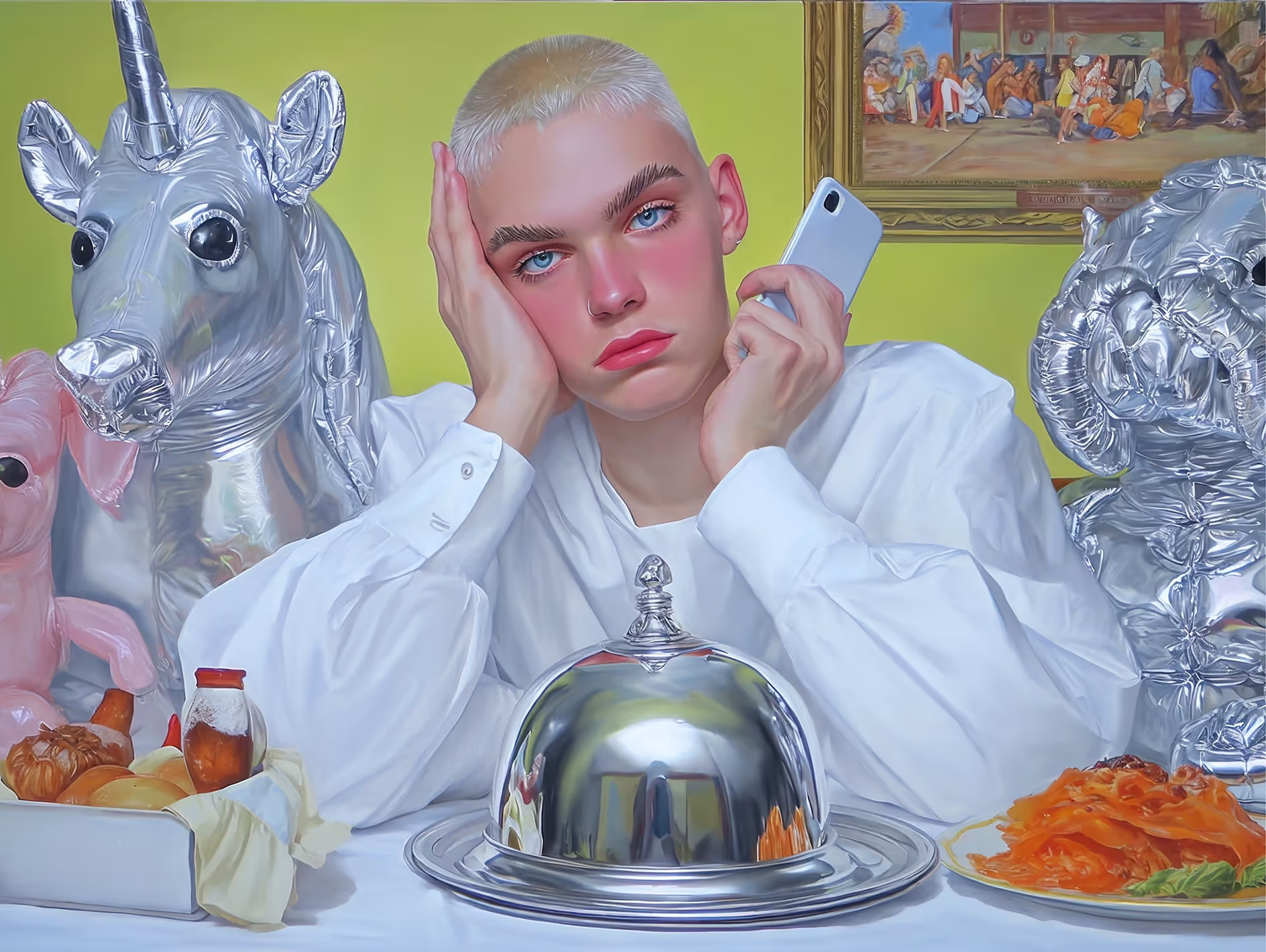
Creators Keepin' it Real Weird
It's not just big brands making bold moves. Plenty of individual creators are using their quirkiness and original ideas to make an impact — and a shit load of money.
Therapy Gecko
@lyleforever dresses as a giant green gecko and hosts call-in therapy sessions, offering life advice to strangers while in costume. The show features bizarre, heartfelt, and hilarious conversations with anonymous callers. Eat your heart out, Geico.
Jan Hakon Erichsen
@janerichsen is a Norwegian artist known for the creative destruction of household objects — popping balloons with knives, wearing hats made of food, and staging elaborate "dangerous" contraptions. His work is a blend of absurdity, danger, and performance art. And his ~800k followers eat that shit up like glass.
And probably my personal favorite… 🥁
@beeple_crap (real name unknown — which is probably for the best, considering the political nature of some of his creations). Beeple delights over 2 million followers with surreal and bizarre artwork, often packed with grotesque, satirical, and absurd imagery that reflects pop culture and technology. 🚨BIG OL' NSFW ON THIS ONE.🚨
What I learned (What you should learn): Commit to the bit! Or, as Yoda would say, "Do or do not. There is no half-ass."
The Unusual Marketing Audit: Your Action Plan
Want to evaluate whether your brand's strangeness hits or misses? Here's a practical framework any marketing team — even teams of one — can use:
The Four Pillars of Authentically Weird Marketing
- Purpose-Driven Strangeness: Your bizarre elements should serve your brand message, not distract from it. Ask: "Does this odd element make our core value proposition clearer or more memorable?" If the answer is no, you're just being random.
Action item: Write your brand's core message in one sentence. Then ask: Does your strange campaign make this message stronger?
- Consistency Over Surprise: One-off quirky campaigns often backfire. Sustainable oddness comes from developing a consistent brand personality that naturally produces bizarre moments.
Action item: Define your brand's "eccentric personality" in 3-5 adjectives. Does every piece of content reflect these traits?
- Audience-First Absurdity: Know your audience's sense of humor and cultural context. What's delightfully strange to millennials might be alienating to Gen X — and vice versa.
Action item: Survey your actual customers about which "odd" ads they remember positively. Use their language and references.
- Internal Authenticity Check: If your team doesn't genuinely laugh or get excited about your bizarre content, your audience won't either.
Action item: Before launching, present your campaign to employees who aren't on the marketing team. Their honest reactions are your canary in the coal mine.
The ROI of Getting Weird Right
The data shows that authentic weirdness pays off measurably. Funny content is ranked highest for memorability by 50% of consumers, and ads featuring user-generated content (UGC) see a 50% decrease in cost-per-click compared to traditional, polished ads.
But here's the real metric that matters: genuine strange marketing creates what researchers call "positive brand salience" — when consumers think of your category, they think of your brand first. That's worth more than any single viral moment.
The Future of Authentic Strangeness
As we wait for the great asteroid to end our suffering, the marketing landscape is at a crossroads. Brands can continue down the path of algorithm-optimized manufactured oddness, or they can rediscover what made strange marketing magical in the first place: genuine human creativity, authentic brand personality, and the courage to be genuinely different rather than focus-group different.
The death of manufactured weirdness might be good news. As consumers become more sophisticated at detecting fake authenticity, brands that commit to genuine strangeness will stand out even more. The unicorns will rise above the robots — metaphorically speaking.
The future belongs to brands brave enough to be authentically weird rather than strategically strange.
The early data from 2025 is promising: brands that prioritize authentic storytelling over viral moments are seeing higher long-term engagement rates, suggesting that audiences are rewarding genuine personality over manufactured oddness.
Because in a world full of manufactured oddness, genuine weirdness is hyper-profitable. A four-year study of over 2,300 ads reveals that emotional resonance and authentic brand connection are now outperforming traditional metrics, with brands that focus on genuine consumer understanding experiencing measurable improvements in both purchase intent and brand appeal.
So here's to the brands willing to embrace their inner freak without asking permission from an algorithm. May your campaigns be strange, your creativity genuine, and your engagement metrics secondary to your authentic voice.
After all, in the attention economy, being memorably weird beats being forgettably normal, but being forgettably weird? That's the worst fate of all.
So stop being cowards. Drop the “weird like everyone else” act and unleash the actual chaos. Or go back to your canned B2Bisms; they’ll always be waiting for you.
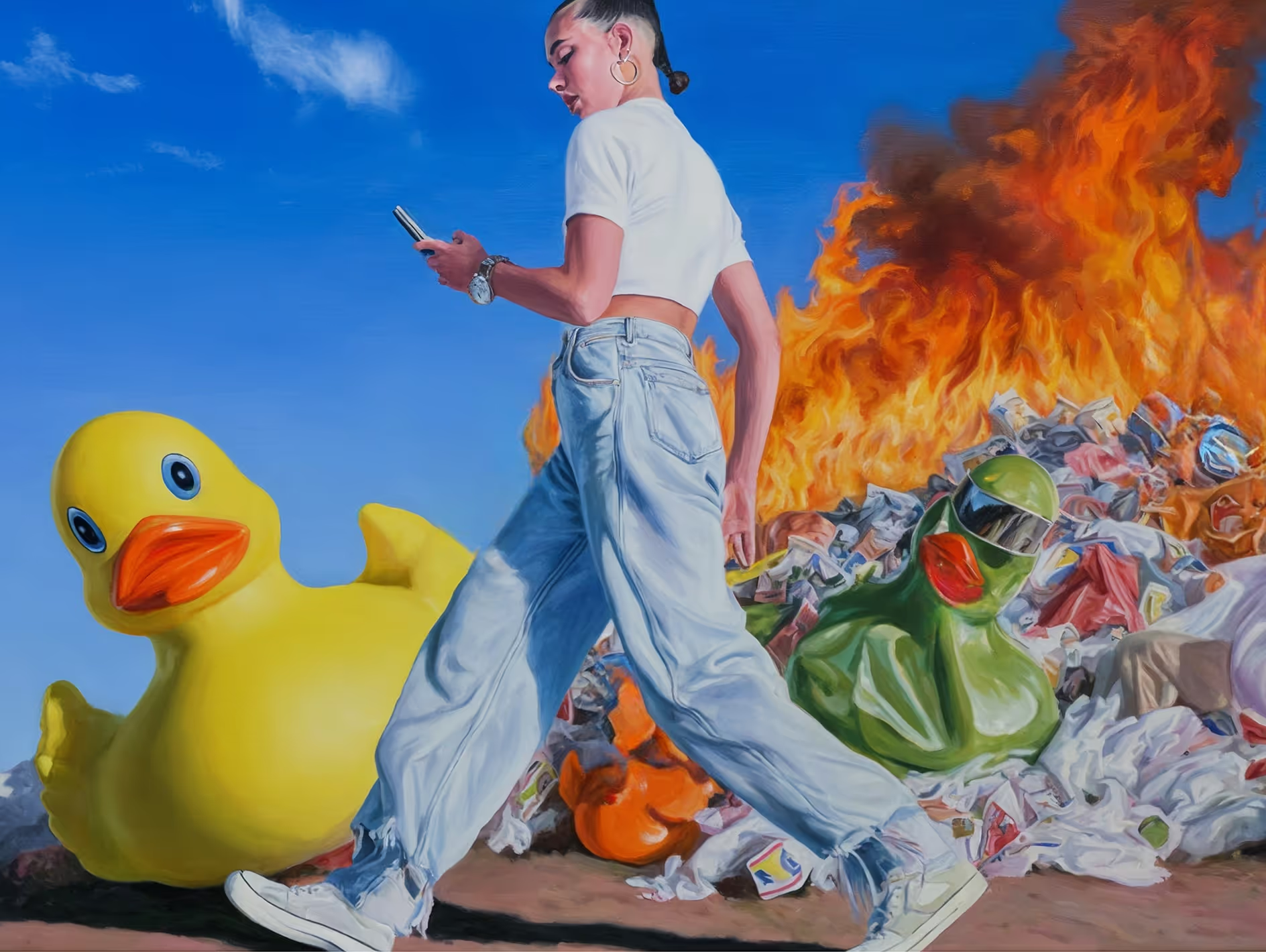



© 2025 Manychat, Inc.
